Transborder Immigrant Tool Series: Beware of ‘Assassin Bees’
The ninth poem in "The Desert Survival Series / La serie de sobrevivencia del desierto" explains that Africanized bees, even when unprovoked, will attack humans.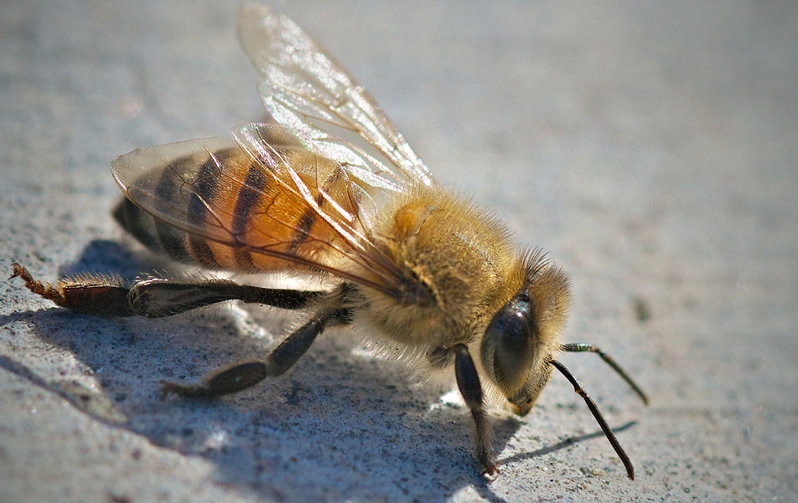 Africanized honey bees are aggressively territorial. (Daniel Plumer / CC BY 2.0)
Africanized honey bees are aggressively territorial. (Daniel Plumer / CC BY 2.0)
Africanized honey bees are aggressively territorial. (Daniel Plumer / CC BY 2.0)
The Transborder Immigrant Tool is a GPS cellphone safety-net tool for crossing the Mexico-U.S. border. It was developed by Electronic Disturbance Theater/b.a.n.g. lab in 2007 by artists Micha Cárdenas, Amy Sara Carroll, Ricardo Dominguez, Elle Mehrmand and Brett Stalbaum, in conjunction with CALIT2/Visual Arts Department/University of California, San Diego/Program in American Culture, Latina/o Studies/English Department/University of Michigan, Ann Arbor.
Poet Amy Sara Carroll wrote a series of 24 poems titled “The Desert Survival Series / La serie de sobrevivencia del desierto,” which were uploaded onto cellphones equipped with simple compasses and interfaces. Each poem is a form of lyrical advice that provides readers and listeners with tools for every hour of a day spent in the pernicious borderlands between the U.S. and Mexico. Truthdig is publishing these poems in Spanish and English in our Poetry section, accompanied by bilingual audio recordings. To read the first, second, third, fourth, fifth, sixth, seventh and eighth poems in the series, click on the hyperlinks. For more information on the project, watch the video presentation below.
The ninth poem in “The Desert Survival Series/La serie de sobrevivencia del desierto,” read in English by Lisa Nakamura and Spanish by Wiliam A. Calvo-Quiros.
9.
Africanized honey bees (AHB) present a formidable challenge to anyone traveling the Americas. Other bees might circle a person, but would refrain from stinging him or her without provocation. Sweat bees, for instance, will land on a hand to drink their fill of perspiration. Left to their own devices, they will not attack, but will fly away when they’re satiated. But, “killer,” or “assassin bees,” the descendants of migrants (themselves the descendants of twenty-six Tanzanian bees accidentally released in southeast Brazil), are aggressively territorial. Almost identical in appearance to kinder and gentler bee populations, Africanized bees–now the reigning queens and workers of the Sonoran Desert–congregate near water holes and flowering cacti. Killer bees will defend their hives against perceived threats, attacking by the thousands. Do not pass within thirty meters of their colonies (eminent domains), constructed in veritable earthworks (mounds and cavities), cacti trunks, creosote, mesquite, former travelers’ lay-up sites. (They’ve even been known to nest beneath the lids of water cache barrels!) If you see large numbers of bees’ patrolling or hear their drone, move on. Killer bees read dark or bright colors–clothing or hair–as the sign of a predator. If AHBs swarm, do not wave your arms or swat their bodies. Run! Or, wrap yourself tightly in a blanket. Africanized bees motion-detect enemies, measure the latter’s expelled carbon monoxide. Your first priority must be to protect your face (swelling of the mouth and nose inhibits breathing). If stung, find a safe space. Then, use your fingers, an earring, a shard of granite to remove stingers and venom sacks lodged beneath the skin (otherwise, even those fragments will keep pumping venom into you).
Las abejas africanas son un reto formidable para los que viajan por las Americas. Otras abejas pueden rodear a una persona, pero rara vez la picarÃan sin provocación. Las abejas del sudor, por ejemplo, aterrizan en la mano para beber hasta saciarse de la transpiración. Si no las perturba, no atacaran y se irán volando cuando estén satisfechas. Sin embargo, las abejas asesinas, descendientes de migrantes(que a su vez vienen de veintiséis abejas de Tanzania liberadas accidentalmente al sureste de Brasil), son agresivamente territoriales. Son casi idénticas a otras abejas mas dóciles y tranquilas. Las abejas africanas–ahora las reinas y trabajadoras del desierto de Sonora–se agrupan cerca de los posos de agua y de los cactus que han florecido. Las abejas asesinas defenderán sus panales en contra de cualquier amenaza: miles atacaran. Mantenga una distancia de no menos de treinta metros de sus colonias (dominios eminentes), construidas sobre un terráplen (lomas y huecos), cactus, creosotas, mezquites, los acampamentos abandonados de otros viajeros.(!Hasta han anidado debajo de las tapas de los barriles de agua!) Si ve muchas abejas patrullando o escucha su zumbido, siga caminando. Las abejas asesinas perciben los colores oscuros o brillantes–en la ropa o el cabello–como un predador. Si las abejas forman una nube, no agite sus brazos y no las golpee. !Corra! O abriguése con una sabana. Las abejas africanizadas siguen los movimientos del enemigo, midiendo el monóxido de carbono que suelta. La prioridad debe ser cubrirse la cara (la hinchazón de la nariz y boca impide su respiración). Si le pican, busque un lugar seguro. Después, utilice sus dedos, un arete, una trozo de granito para quitarse los aguijones y los sacos de veneno alojados bajo la piel (si no lo hace, estos fragmentos continuaran inyectándole veneno).
Independent journalism is under threat and overshadowed by heavily funded mainstream media.
You can help level the playing field. Become a member.
Your tax-deductible contribution keeps us digging beneath the headlines to give you thought-provoking, investigative reporting and analysis that unearths what's really happening- without compromise.
Give today to support our courageous, independent journalists.
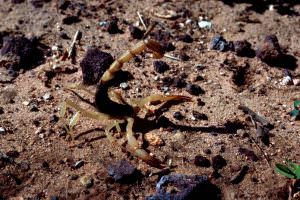
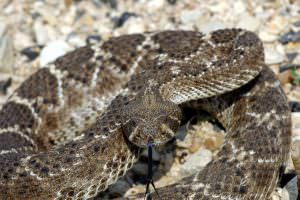
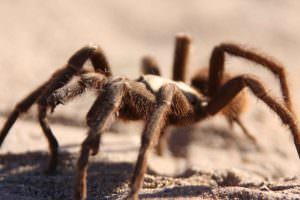

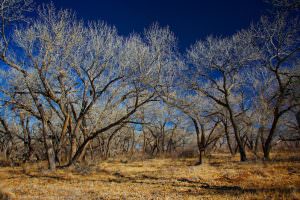
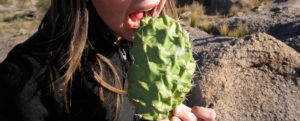
You need to be a supporter to comment.
There are currently no responses to this article.
Be the first to respond.